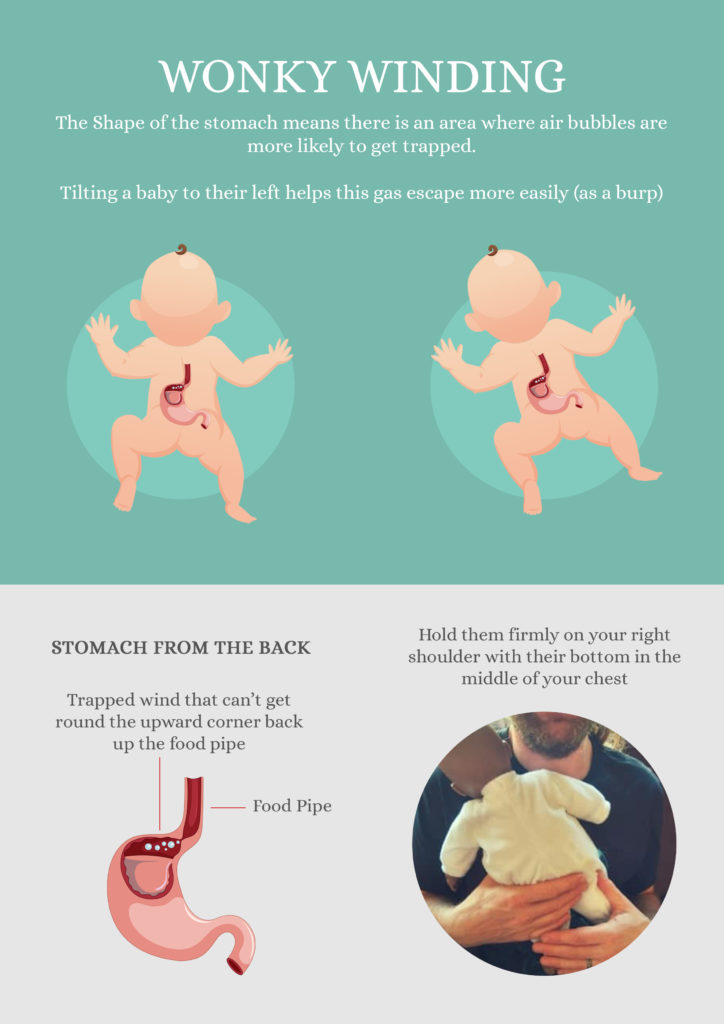Symptoms of Reflux, Silence Reflux and Colic in Babies

Colic or reflux, what’s the difference?
Is it reflux, colic, purple crying or a witching hour?
Infant colic is regular, excessive crying in an otherwise healthy baby. Colic is actually a process of elimination diagnosis. This means that there’s nothing to explain the excessive crying or discomfort and the baby is otherwise healthy and well. A diagnosis of reflux means that the stomach contents are coming up to the esophagus, and the acidity of the stomach acid is irritating the tissue in the throat. This causes pain and discomfort, leading to extended periods of unsettledness.
The term ‘colic’ can be used loosely in the medical community and is often used to describe tummy aches and digestive upset.
What causes infant colic and reflux?
A newborn’s tummy is brand new and hasn’t really needed to do any work before. Milk feeding is (or theoretically, should be) the easiest food for an infant to consume and digest. Unfortunately, as we sometimes find out, this isn’t always the case and little tummies can be easily upset, leading to symptoms of colic and reflux.
Does my baby have colic or reflux?
Signs of colic and/or reflux can include;
- Tummy pain that seems to improve after passing gas
- Spilling or vomiting milk and even solid foods
- Immaturity of the gastrointestinal tract, leading to discomfort when digesting milk, passing gas or stool
- Tummy pain due to a reaction to something in breastmilk or formula milk
Trying to figure out the cause can be tricky. Babies with colic cry a lot, babies with gas can cry frequently and babies with reflux also cry a lot as well. In some cases, there may be more than one underlying cause for their discomfort.
What causes infant reflux?
The lower esophageal sphincter is responsible for preventing the contents of the stomach from coming back up. Generally, reflux occurs because the sphincter hasn’t yet developed enough to contract properly. In the same way that a baby is still developing the ability to roll, sit and clap, the esophageal sphincter is still developing and maturing as well. As babies grow and they get stronger, they spend more time upright and the symptoms of reflux begin to improve.
How to soothe itchy eczema skin
While we figure out the source of the issue, it’s important to manage the discomfort.
Conventional eczema creams usually contain steroids or antihistamines. Corticosteroid use in paediatric eczema can quickly relieve itchiness and reduce inflammation, but unfortunately they don’t address the underlying cause. Eczema is usually a symptom, and while suppressing the symptom of itchy skin can make your child more comfortable, it can also lead to a reliance on medicated creams.
Causes of colic in babies
The causes of colic are still unknown. There are theories, but many colicky babies have no clear underlying causes. Diet during pregnancy and breastfeeding may contribute to symptoms of food sensitivities, leading to colic-like symptoms. Caffeine, nicotine and some medications found in breastmilk are also linked to infant irritability. Full bellies and gas are unfamiliar feelings to newborns, and some babies may interpret these sensations as painful or scary.
Addressing the cause of childhood eczema
There’s a bit of a difference when it comes to how a naturopath treats childhood eczema. The whole point of naturopathic medicine is to figure out why a problem is occurring, not to just find the natural equivalent to a pharmaceutical treatment.
Symptoms of reflux for babies
- Spitting up or vomiting that seems to cause pain
- Crying and irritability during milk feeds
- Arching the back, pulling legs up
- Poor sleep, due to pain when lying flat
- Refusing to feed, or feeding frequently
- Choking or gagging
- Frequent respiratory tract infections and wheezing
Symptoms of colic for babies
- May settle with effective burping or after passing gas
- If breastfed, the baby may be particularly sensitive to beans, brussels sprouts, broccoli, cabbage and cauliflower
- Episodes of inconsolable crying, vigorous kicking, pulling the legs up tightly to the body and making tight fists
- Swollen or distended tummy
- Frequent vomiting after feeding
How to treat infant colic and reflux
Conventional treatment of infant reflux typically involves decreasing the acidity of the stomach acid. The reflux still occurs, but it no longer causes any pain because it’s less acidic. However, it’s important to consider the reasons why we have stomach acid. By the time babies begin eating solid food, their digestive systems rely on stomach acid to properly break down and digest food.
In regards to colic, it’s important to rule out all possible causes for pain or discomfort. If you’re unsure about a diagnosis of colic, it’s completely fine to seek a second opinion from a different health care practitioner or request a follow-up assessment and additional testing. For most babies, making some adjustments to feeding techniques will help ease discomfort until their little tummies mature.
Quick tips for colic and reflux
- Keep baby elevated where possible, for 20min after milk feeding and during feeding (consider babywearing)
- Elevate for sleep
- Burp after every feed to decrease the amount of air building up in the stomach. Try ‘wonky winding’ to effectively move trapped wind
- Keep a symptom diary
- If bottle feeding, your baby may benefit from a slower flow teat
- Apply warmth to the belly area
- Carminative herbs (chamomile, fennel, dill), carminatives may worsen symptoms for reflux babies
How can you tell the difference between colic and reflux?
Differentiating between colic and reflux can sometimes be very difficult. Some babies can have both reflux and gas, which can involve different treatment approaches. Carminative herbs are used to relieve gas pain and help it pass. Colic drops and gripe water are common over-the-counter options to treat wind pain, but these can actually make the symptoms of reflux worse for some babies. Professional guidance when considering herbal medicines is always the best option.
Reflux in breastfed babies can sometimes be explained by a food that the baby is being exposed to through milk. Identifying and eliminating the offending food can help in the management of reflux. Very often, the culprit is coffee (even decaf), but could also be chocolate, dairy, spicy foods, or citrus. Other foods to consider include soy, eggs, nuts, wheat, cruciferous vegetables, or high histamine foods.
When will colic and reflux symptoms improve?
Once the culprit is removed, reflux symptoms can subside within a couple of days, though dairy elimination may take as long as 2 weeks to see a difference. When breastfeeding, it’s important to be very careful when considering eliminating food from your diet. The very last thing we want to do is risk calorie or nutrient deprivation. It is not advised for anyone to undertake an elimination diet without professional guidance.
Can Formula worsen symptoms of colic and reflux?
For formula-fed babies, we always review the current formula and if needed, trial other brands of milk. Different formulas can have varying protein ratios and ingredients. Just because one baby responds well to a particular brand, does not mean that another baby (even a sibling) will have the same positive experience. If changing formulas doesn’t provide any relief, herbal medicine and nutrient therapy in combination with support from other healthcare practitioners can help to finally bring relief.
Gas pain after feeding? How to effectively burp your baby






